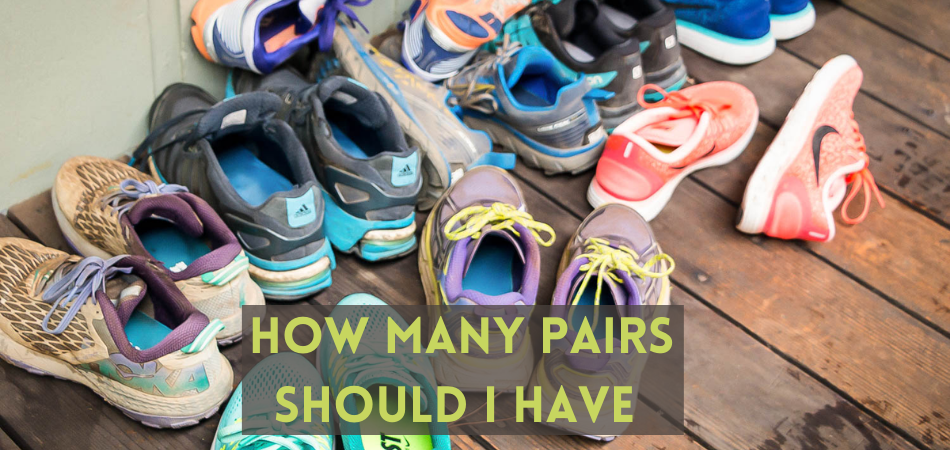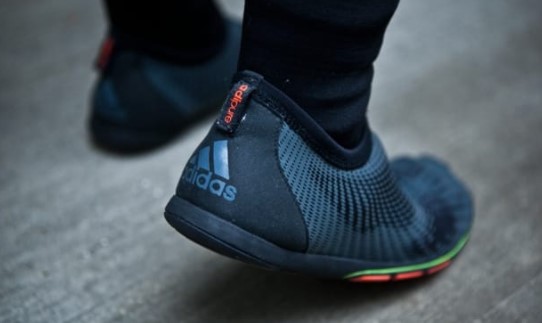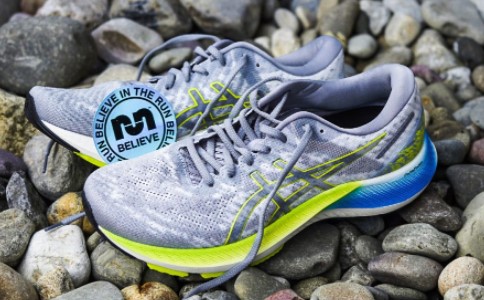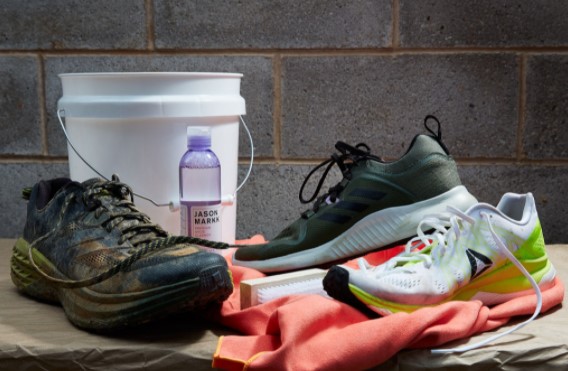Just like any other life goal, so is running. It takes discipline, determination, focus, and consistency to actively commit to your running routine. Whether you run for fitness or athletics you need the right gear for comfort, speed, and safety. Running gear comprises accessories, clothing, and shoes.
Today we narrowed down to running shoes. There is a notion that is widely spread that ”all you need is a pair of shoes” but we all know that this is not true. Running shoes are one of the key pieces of gear every runner needs. Whether a regular runner or a beginner, one pair of running shoes is not enough. By the end of this article, you will be able to answer the question: How many pairs of running shoes should I have?
How Many Pairs Of Running Shoes Should I Have?
There is no specific number of running shoes that one should have. However, the experts recommend that every runner should have at least 2 pairs of running sneakers. Running shoes are different and they are made for different purposes both training-wise and biochemical. Some of the factors that influence the choice of running shoes you should have include:
- Bodyweight
- Unique Biomechanics
- Training surfaces
- Training goals
- Personal preferences
- Your foot type and gait
Below Are Some Types Of Running Sneakers:
1. Lightweight Shoes
They are also called racing flats. They are suitable for speed training, like fartleks, intervals, competition and sprints. They are made with minimal cushioning features and foam beneath the foot. This gives the feet a natural dynamic movement lowering the ability for shock absorption. They are highly recommended for runners who do a lot of speed work or race. For beginners, this type of running shoe is not suitable for use but you can use it later on.
2. Trail Shoes
Just like the name suggests, these are shoes made for trail training. Their design makes them effective for undulating running surfaces, hard-packed paths and terrains. Trail Runners have to run across terrain obstacles like rocks, mud, and dirt, hence they need enough protection, support, and stability.
They are also suitable for hiking. They provide enough ankle and feet protection from the rocks found on rocky terrains and all the roots. They have aggressive soles and stickier rubbers that provide a perfect grip for greater control and traction on slippery surfaces.
3. Stability Shoes
They offer good support and inner sole shock absorption hence they are suitable for individuals with neural feet and normal arch. They also help to prevent and reduce excess pronation (foot rolling inwards upon impact) by offering extra ankle and arch support in every stride.
4. Motion Control Running Shoes
These types of shoes tend to be stiffer than the normal sneaker and are made with a broad sole to reduce excess motion on every stride. Pronation is a natural body movement and different runners pronate differently. However, some pronate excessively and they require these type shoes to assist them reduce, or prevent it. These shoes come in handy for such runners with moderate or serious excess pronation. They are also suitable for heavy runners searching for running sneakers with high durability and stability.
5. Cushioned Shoes
They are also called neutral padded shoes. They are built with an additional cushioning for ease and relaxation but with less supportive elements. They are recommended for individuals with little or totally no pronation since they provide both protection and shock absorption with or without extra support on every stride.
In addition, it is important to note that there are no special running shoes for compartment syndrome. Instead, a runner should change from heel striking to forefoot striking to help manage this condition. The transition from heel striking to forefoot strike pattern needs to be slow to allow for the tissues to adapt to the loads. Therefore, the type or model of shoe is not particularly important in this case, it’s the running technique and the touchdown angle that are important. That can be achieved in any type of running sneakers.
Benefits Of Having Multiple Pairs Of Running Shoes
At this point, you must be having an answer to the question: how many pairs of running shoes should I have? Now let us answer the question of why you should be having multiple pairs of running sneakers:
Your Shoes Will Last Longer
Most running shoes last between 600 to 800 KMs before needing a replacement. With multiple pairs of shoes, you can get more mileage since it’s not only one pair of shoes that is being exposed to too much wear and tear. Multiple pairs of shoes also allow you to extend the amount of time between buying shoes, you lessen the cost of replacing unlike when you have one pair replacement is too soon.
Shoe Recovery
Repeating the same pair of shoes every time you run does not give the foam in your shoe enough time to decompress and to return to its original state. Each time you take a stride and land, your foot has to absorb 2 to 3 times your body weight. This weight is exerted on your running shoe. Therefore, when you rotate your running shoes, you give them maximum time for the foam to fully decompress. You should consider a maximum time of 25 hours and above. The longer you take in your rotation cycle between different running shoes, the more time the shoe has to recover to return closer to its original state.
Shoe Models Change Annually
Shoe companies tend to introduce new models annually yet the purpose of your shoe remains the same. Most of these new models are an upgrade of the older models. There is a likelihood that the fitting and the support of your favorite running shoes model will change. With multiple pairs of shoes from a particular model, you will have more time before making a change. It will also save you frequent stress and pain from injuries caused when trying a new pair of shoes.
Diversity
Different types of running shoes offer different types of support and protection. This difference is enough to energize and use different muscles in your feet and legs which cannot happen when you are training in only one type and pair of running shoes. Different shoes distribute the impact forces of running differently hence lessening the strain on any given part of your body.
It Builds Body Strength
Multiple pairs of running shoes expose your body muscles to different pieces of training. This is a great way to fully maximize the benefits of strength training exercises and shorter hard workouts. This helps your body to become stronger and more flexible.
How To Look After Your Multiple Running Shoes?
Running shoes provide the best protection of your feet, legs, and body from the repeated stress from thousands of foot landings per mile. They have in-built features that enable you to run day after day more comfortably and with less chance of overuse injury. That’s why it is important to invest in quality running shoes. This investment requires proper maintenance so you can enjoy them for a longer time. Below are some tips on how to look after your multiple running sneakers:
Wear Your Shoes For Running Purposes Only
No matter how beautiful or comfortable your running shoes are, ensure that you are using them for their specific purpose which is running. Wearing them regularly even when you are not running may reduce their mileage. This will cost you more on replacement.
Regular Repair
You may encounter minor damages on your running shoes such as missing eyelets and loose stitching that may not necessarily guarantee a replacement. You can have them fixed by a reliable cobbler or return them to your dealer’s shop if they offer such services.
Proper Storage
Store your running shoes in an open dry environment where they are safe from damage and there is an inflow of fresh air. They will serve you for a longer time without needing a replacement.
Clean Your Running Shoes On Regular Basis
Running routes are normally different. Some are full of grass and leaves while others are wet and muddy exposing your shoes to stubborn stains. Sweat during your workouts can also affect the condition of running shoes. Leaving them sweaty and muddy after a run can weaken the stitching, damage the rubber, and your shoes can become a breeding ground for molds. Proper care and cleaning are therefore necessary for keeping your shoes fresh and maintaining their quality for as long as possible. We recommend that you follow the following cleaning steps:
- Remove the laces and the inner soles.
- Using a cleaning brush, brush away the mud and any dirt from your shoes.
- Clean them using a sneaker cleaner of your choice.
- Protect them against mud and water by applying sneaker anti-dirt.
- Treat your shoes with your preferred sneaker fresh to remove bad odors.
Final Words
Finally, the question of how many pairs of running shoes should I have has been answered. And not only that, but you also know the shoe that fits your feet. The process of buying a perfect pair of running shoes is a trial and error process. If you are lucky enough to get an expert dealer, they will help you get a shoe that fits your feet properly.








